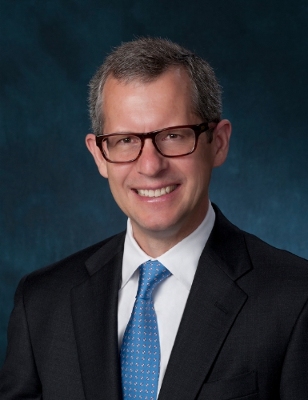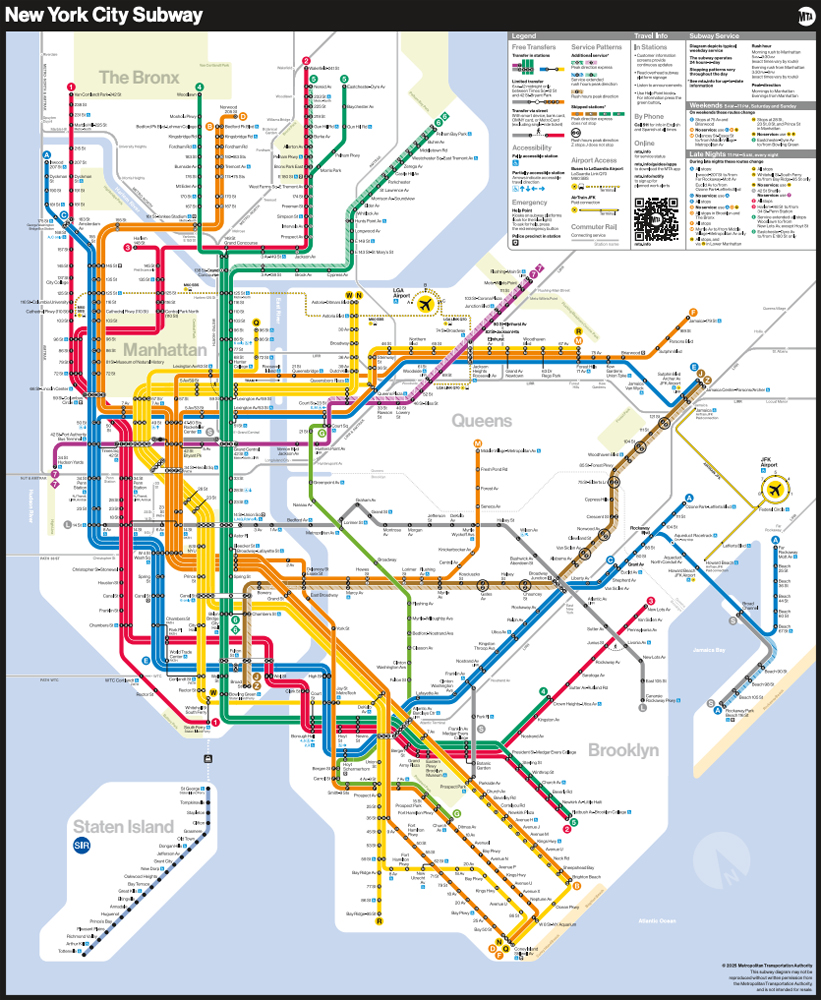That sums up Norfolk Southern’s response to Wall Street analysts’ questions on why it has not closed a widening operating ratio gap with its Eastern rival, CSX Transportation.
NS CEO Jim Squires on Wednesday took his turn in the same hot seat that Union Pacific CEO Lance Fritz found himself in last week, with both chief executives facing questions about why their railroads couldn’t move as fast as CSX to cut costs and boost profitability.
Like UP, NS reported record quarterly financial results. But its operating ratio did not keep pace with the progress at CSX under its shift to Precision Scheduled Railroading, the operating model of the late CEO E. Hunter Harrison.
CSX posted a record 58.6-percent operating ratio for the second quarter. NS’s operating ratio was a record, too, but at 64.6 percent it was 6 points higher than CSX’s and ranked last among the publicly traded Class I railroads.
Squires said he was confident that NS would meet its 2020 sub-65 operating ratio goal ahead of schedule, although he declined to provide a date.
Some Wall Street analysts were unimpressed.
Deutsche Bank analyst Amit Mehrotra asked whether there was any reason NS should have a different return profile than CSX.
Squires said NS recognizes boosting profitability is important, and consistent improvement in the operating ratio is part of its plan that balances growth and productivity gains.
“We’re going to continue to push on operating ratio,” Squires says. “When we get to the current goal of sub-65 we certainly won’t stop there.”
But is it fair to say that NS has more of a growth focus than CSX?
“I will say this. This is a terrific environment in which to grow. And we have been executing on growth by sending that growth to the bottom line,” Squires said, pointing to the railroad’s improvements in operating income.
The railroad business is cyclical, Squires adds.
“You better jump on that growth opportunity when you have it,” Squires says.
Norfolk Southern’s traffic was up 6 percent for the quarter, compared to CSX’s gain of 2 percent — which ranked the lowest among the big six systems.
RBC Capital Markets analyst Walter Spracklin asked if NS saw the need to make disruptive operational changes like CSX did last year in order to quickly reduce structural costs and then pursue more profitable growth.
Squires said NS closely watches industry developments and will adopt best practices. It’s about to restructure its operating regions and divisions, will consolidate dispatching in Atlanta by the end of the year, and is simplifying its local operating plan by collaborating with customers, Squires notes.
But is anything more dramatic than that, such as significantly reducing the number of hump yards as CSX did last year, seen as too risky?
“A classification network that can provide good local service is one of the keys to growth in the merchandise network,” Squires says. “We have rationalized our yard network and will continue to look at that. But it is important to maintain adequate classification capacity. We closed a couple of hump yards, and we brought one back recently.”
Wolfe Research analyst Scott Group noted that historically NS has been more profitable than CSX. Does that mean NS has a better network than CSX?
“I like our network a lot, Scott,” Squires says. “I think we have an outstanding network with a lot of potential for both efficiency and growth. … I’ll take our network any day.”
Bank of America Merrill Lynch analyst Ken Hoexter asked where NS saw opportunities to improve — and whether it needed to hire operations people with Precision Scheduled Railroading experience in order to reduce the number of employees the way CSX has.
CSX had 22,942 employees at the end of the second quarter, which was down 11 percent from a year ago, while NS had 26,535, a decrease of 2 percent.
“I’m very, very confident in our operations team and their ability to drive productivity while maintaining a foundation for growth. We’re in great shape with the team,” Squires responded.
A railroad’s cost structure comes down to people and assets, Squires says, and NS remains focused on both as it looks to balance cost cuts with growth, service, and safety.
Susquehanna Financial Group analyst Bascome Majors asked whether CSX’s financial turnaround was driving short-term profits at the expense of long-term growth. Will NS shareholders be better served by its current strategy or a more aggressive approach like CSX?
“We believe in our plan, and our plan is a balance of efficiency and growth, as I’ve said several times this morning. That really is the right formula in our view,” Squires says. “You do need to make the investments for growth. You do need to have a certain level of resources available, particularly in times that are conducive to growth, like these times. So while we are definitely focused on productivity going forward, right now is the time to make sure you have the workforce in place to handle the business so that you can grow when that’s possible. So I think our plan will be the right plan for our shareholders in the future.”














you want to keep up with CSX , Not the way N&S runs , look at their rails a lot if not most are single track ,where as CSX rails are mostly double tracked very few single rail beds , and as far as maintaince goes , CSX shuts down one track to do the work and theirs the second to keep the trains moving ! N&S has to shut the whole line down stop train movement till the work is completed , not making money that way wasting money and time for sure !
I would think that N.S. should concentrate on pleasing the customers in an efficient manner and let CSX cost cut it self to death.
The current cost to operate a semi OTR is, according to the WSJ, $2.32/mile. CSX has stated it costs $74000 to operate a normal length train from Chicago to NYC area. Do the arithmetic on that and tell us where the growth potential lies. If, in the current traffic environment, major sustained growth can’t be developed, it never will be, at least under the current management. Stock repurchases at the expense of timely growth will haunt the management in the future. I would think now,of all times, would be the time to, at least experimentally, offer a hotshot TOFC service from Florida and the southeast to Chicago, Ontario and the NYC area. COFC is simply too capital and labor intensive to be competitive for time dependent freight. If the Pennsy and NYC could operate 18 and 20 hour NYC-Chicago transit times 60 and 70 years ago, what excuse is there for not replicating it today? The Europeans are doing it. Why can’t we?
Congratulations NS you must be doing things right to draw this comparison
BTW, I just checked and see that NS has the best P/E ratio of all the class 1s. Why would Wall Street have a problem with that?
Just what cost are you using. Marginal, variable, average or what? They can, and do change with volume. Are you including the cost of capital?
An enterprise generally doesn’t consider a single sale as its profit. They can get a very good mark up on a sale, but still loose money for the year if they don’t have enough sales (volume).
Capital is a very real cost. It has to be covered the same as labor and fuel. Many folks out here seem to be in denial of that.
You guys can keep arguing, I’m going to cash my dividend check. 🙂 See you in three months.
I am so very happy that the parent company of my railroad does not answer to analysts, and does not care what they think.
Mr. Strawbridge, My definition of profit is very simple. If I make an item that cost $20.00 to make and sell it for $25.00 I have made a profit of $5.00.
Accounting is a very inexact occupation and I’ve been suspicious of the magic figure that CSX posted as an operating ratio. There have been too many instances of books being manipulated to show what management wanted, Just saying.
If Wall Street went away tomorrow, we would still be running trains, buying and installing new rail, etc, thanks to income derived from serving customers.
CSX is taking the opposite approach, that if customers went away tomorrow, they would still be running trains and buying new rail, thanks to investor money only.
If railroading can survive the 1950s-70s, it can survive without Wall Street and the demands of their parasites who don’t work for a living..The featherbedding principles have just relocated from the employee class to the investor class.
Now lets get back to the action of watching Mr. Small Potatoes point to the 438 linear feet of rail his measly retirement funds bought.
Well said Russel. I especially like your two objections. If one had invested $100.00 in HD when it first came on the market and sold it a couple of years later, they would have made some money. But if they still had it, it would be worth close
to $700,000 today.
This topic is being worked to death, but I will still add my two cents. I am an investor in RR stocks, including all the class I roads, and have been for about 40 years. I have done quite well by holding onto them and reinvesting dividends. Investors need an incentive to invest and there is nothing wrong with that. Otherwise any industry would suffer from neglect. What I do object to are two things. First, demanding fast short term profits rather than the far-sighted long term investment in productive capacity that will bring continued prosperity to everyone. The second objection is similar. It is the naked rapacious greed that demands that money is the only good in the world and that nothing else matters. I remember about 20 years ago when NS and CSX had a battle over control of Conrail. One of the executives at an investors meeting took the floor to reason that the offers already made were very generous and that the battle should be ended on that basis. He was shouted down by the “investors”. When the camera showed their faces, it showed twisted masks of greed screaming at him. To these sort of people enough is never enough. No amount of money will ever satisfy them. The last thing they would ever consider would be building up good relations with the shippers, labor, or the public that would aid growth. Looting the company is the only thing that matters.
“It is the people who do the every day work that will make or break a company.”
Well, those people ain’t gonna’ do much without the rails, locomotives, etc., provided by the investors. It takes capital (investment), labor, resources (fuel), and information (management) to produce a good or service. Each of these gets a return. Each of these has a cost.
Investors and their representatives have a right to ask questions. And get answers.
Mr. Crowe,
I very much doubt you can provide a decent definition of the word “Profit”.
Any ongoing enterprise has to earn its cost of capital. I very much doubt you can discern “Cost of Capital” from “Profit”. Otherwise you would not have said they “Want” to “Profit”.
What did I start? My comment was only that the job and purpose of the railroad was to provide an efficient and safe mode of transportation to shippers, manufacturers and others. When I said railroads I meant the industry as a whole. From management to the people who do the actual work such as operating personnel, shop personnel and all others that keep the railroad working. I don’t know why one person decided to make it all about the money. Sure the railroads like any business wants to profit from its actions, and good service will let them make a profit. Investments are important, but are only a part of a good business plan. It is the people who do the every day work that will make or break a company.
I’m so tired of black and white “Wall Street is evil” and “Wall Street is the only stakeholder that matters” arguments. There are commonalities between these various railroads, but in some ways each is unique. Who said there has to be one model?
Maybe the CN, CP and CSX models are the best choice for those railroads and where they found themselves (I might argue against CN cutting too much but they used to be a Crown Corp basket case too). Certainly CP and CSX we’re heading downward. Access to finance capital is very important to this industry. It’s certainly worth watching where BNSF (especially as a control experiment on the public v. private financing variable), UP and NS performance goes relative to the “cut in order to grow” roads go.
Oh yes I do understand and am sympathetic to the short term v. long term argument vis-a-vis Wall Street too. It’s not like Big Finance is some optimum either.
Was it Mao who said “Let a million flowers bloom” ironically enough?
“I have no time for the whiners who think that railroads are social justice organizations for shippers.”
Well if you would go back and read my comment Bob, I think you will see that nowhere did I imply the railroads should be “social justice organizations”, to use your words. I never said that they SHOULD be required to move everything for every shipper. Nor did I say anywhere that the railroad should haul the traffic at a loss or for free. In fact I believe I said that most people with common sense realize companies are in business to make a profit. Yes, they are free to do what they want. However, as I also said, if you chase the smaller ones off even though they may be making money on those movements while keeping the bigger fish and charging more in order to drive up the numbers to keep the shareholders happy, don’t come back to the people when the bigger fish vanish for some reason (economy, moving to another carrier or transportation mode all together) and ask us to help find potential rail shippers because the shareholders are screaming because income is down.
As for your comparison between the railroads of the 70’s and the industry today, I think you are trying to compare a spike maul to a shopping mall.
The industry in the 70’s was a total different animal. Too little business (particularly in the midwest), and too much track (Yes Robert, I was actually paying attention to more than just trains and engines in the industry even as a kid). The railroads were cutting and slashing more for pure survival reasons back then. I would think your “social justice organization” comment would be more applicable to the industry back then when the ICC was watching everything. I don’t see a whole lot of overcapacity in the industry today, and any of the Class 1’s starving for cash. Most of the cutting and slashing today is in response to Wall Street screaming every time the income drops a dollar or the OR creeps up a tenth of a point. So where has that gotten the industry? Well the numbers look great, but they cut off their legs to keep the numbers good and now they can’t move because they don’t have the assets in place to move the stuff. There seems to be a belief on Wall Street that the things always go up, and that the economy should never have ups and downs.
But hey, look at that OR!
OK, I could go in to the reason the money guys are legitimate and important. After all, a successful enterprise needs both investors and customers. Management has to keep both groups satisfied. But many posters out here will not accept that reality. They want a villain to hate and “Wall Street” will do just fine.
“The reason so many people misunderstand so many issues is not that these issues are so complex, but that people do not want a factual or analytical explanation that leaves them emotionally unsatisfied. They want villains to hate and heroes to cheer — and they don’t want explanations that fail to give them that.”
Thomas Sowell (Retired PhD economist)
Many posters just want their heroes and villains. And any logical thought will just make such people angry.
Robert McGuire you are an idiot. ” RRs are not in business to run trains but to make money”. OK brains, how does a rr make money and not run trains? You obviously have no idea how a rr makes money just like your Wall St. buddies, you don’t care as long as you make a buck. It takes good, dedicated people to run the thing, although you get above Trainmaster/RFE level and all they care about is their bonus that the people that work under them have made through their hard work in a dangerous profession. Yeah, I know what I’m talking about; I’m a conductor. You can’t fix stupid, and you are broken.
And society has less time for welfare check cashers, too, Robert, including the affluent ones.
Robert McGuire
I think you don’t know how to invest your money…you’re just like the rest of Wall Street, looking for the biggest bang for your buck now but not caring about the results 5, 10, 15, 20, 30+ years down the road. Well I would rather listen to Warren Buffet and invest like he does than those clowns on Wall Street. Give me long term growth at a lower rate then short term growth at the expense of future growth. Railroads are not an investment you make if you’re looking for short term gain, which is what RM is obviously looking for, they’re like utilities, they’ll provide you a ROI over the long term and are meant to be owned and forgotten about as an investment.
Most railroads obtained their right of way as a result of eminent domain and/or free land they could use for right of way or later sell to settlers which which were induced to buy the land because of access to good transportation. This certainly imply’s an obligation to provide good service as well as allowing the investors in the railroads to earn a reasonable return on their investment. As an investor in KCS, NSC, UP (and BNSF via Berkshire Hathaway as a result of Uncle Warren buying up all the shares he didn’t already own) I would much rather see management support growth by investing in capacity rather than buying back shares which only makes earnings per share look good but doesn’t promote good service or growth of the business.
Steven Bauer, you are absolutely right. I only invest in companies that will return a decent rate of return to me. If I’m not making money on an investment I sell it and invest somewhere else. I have no time for the whiners who think that railroads are social justice organizations for shippers.
Tim Backus put it best. The average stock analyst only knows what the tracks around New York look like!. The 2 years before Bruce & Harrison merged IC and GM&O , GM&O had gained an average of 40 new customers a year (!!!) and then Harrison made his money by ripping up track!! Don’t forget the Deramus activities on the KCS! The same “super-freight” idea of CSX today was practiced on CGW (sold & majority of track scrapped by Ben Heinman) and KCS. Why is CSX having accidents and other fiascos? Do you think MBA programs teach customer service & safety? None of CSX’s Canadian carpetbagger management learned it!